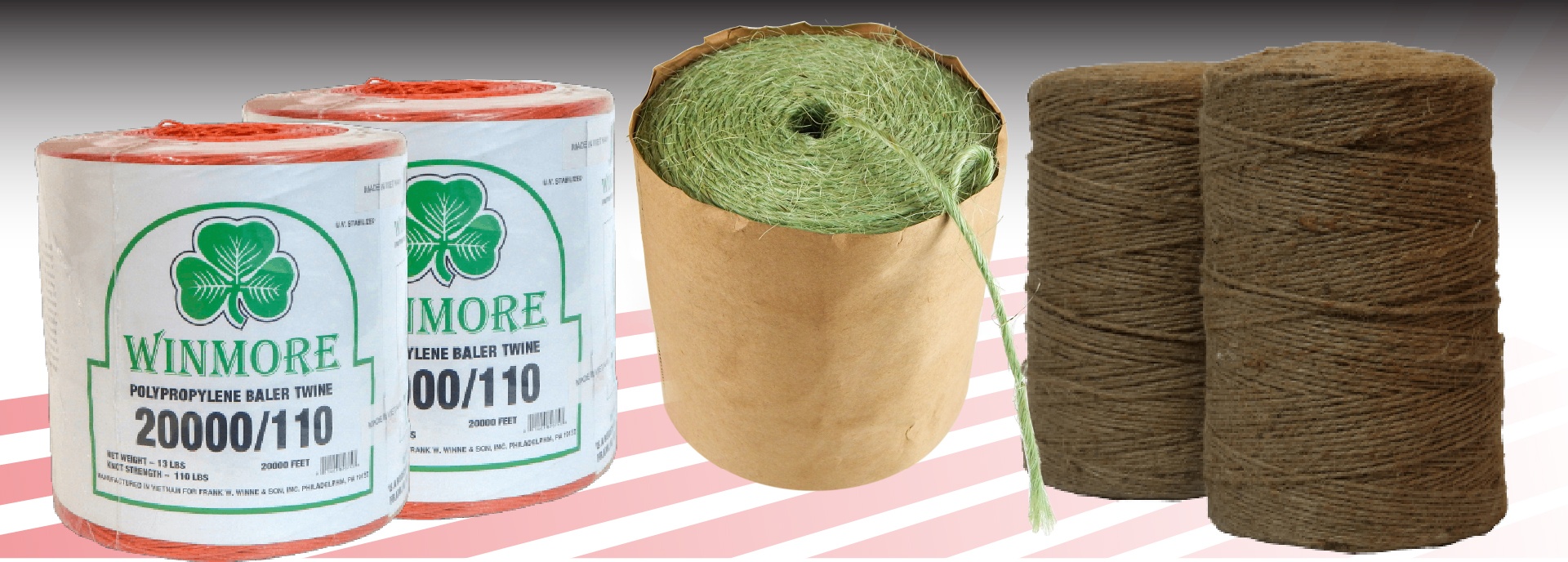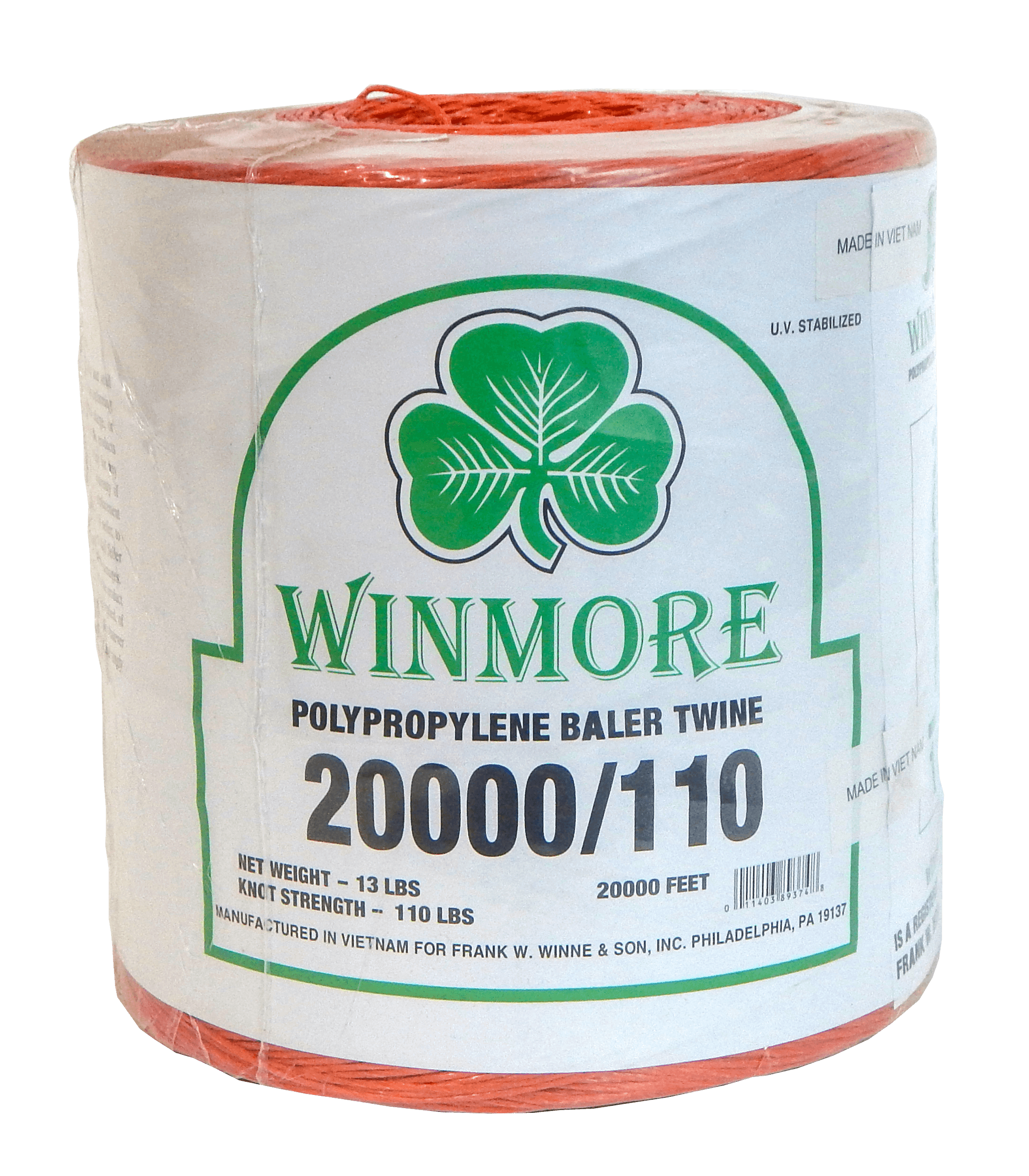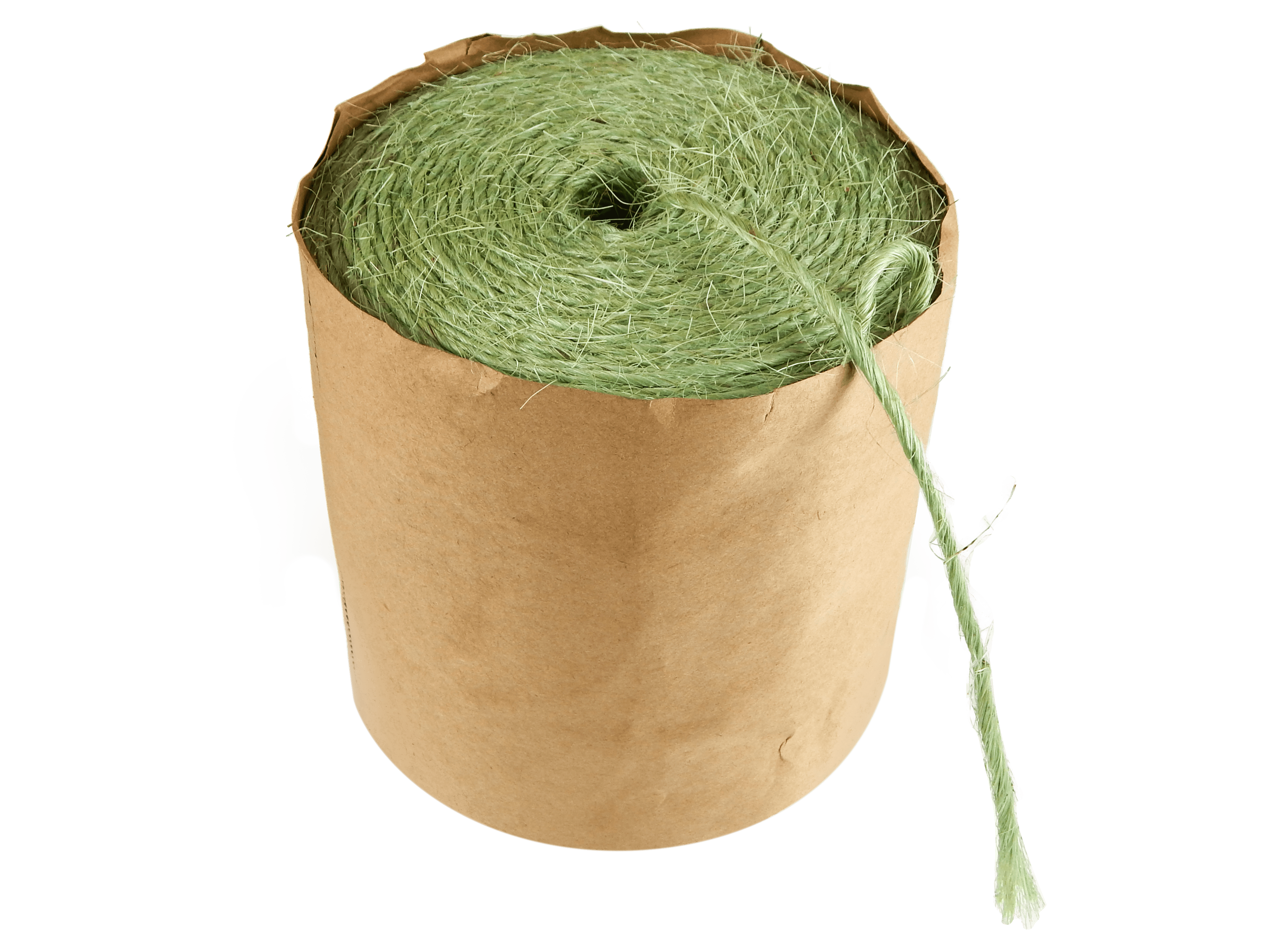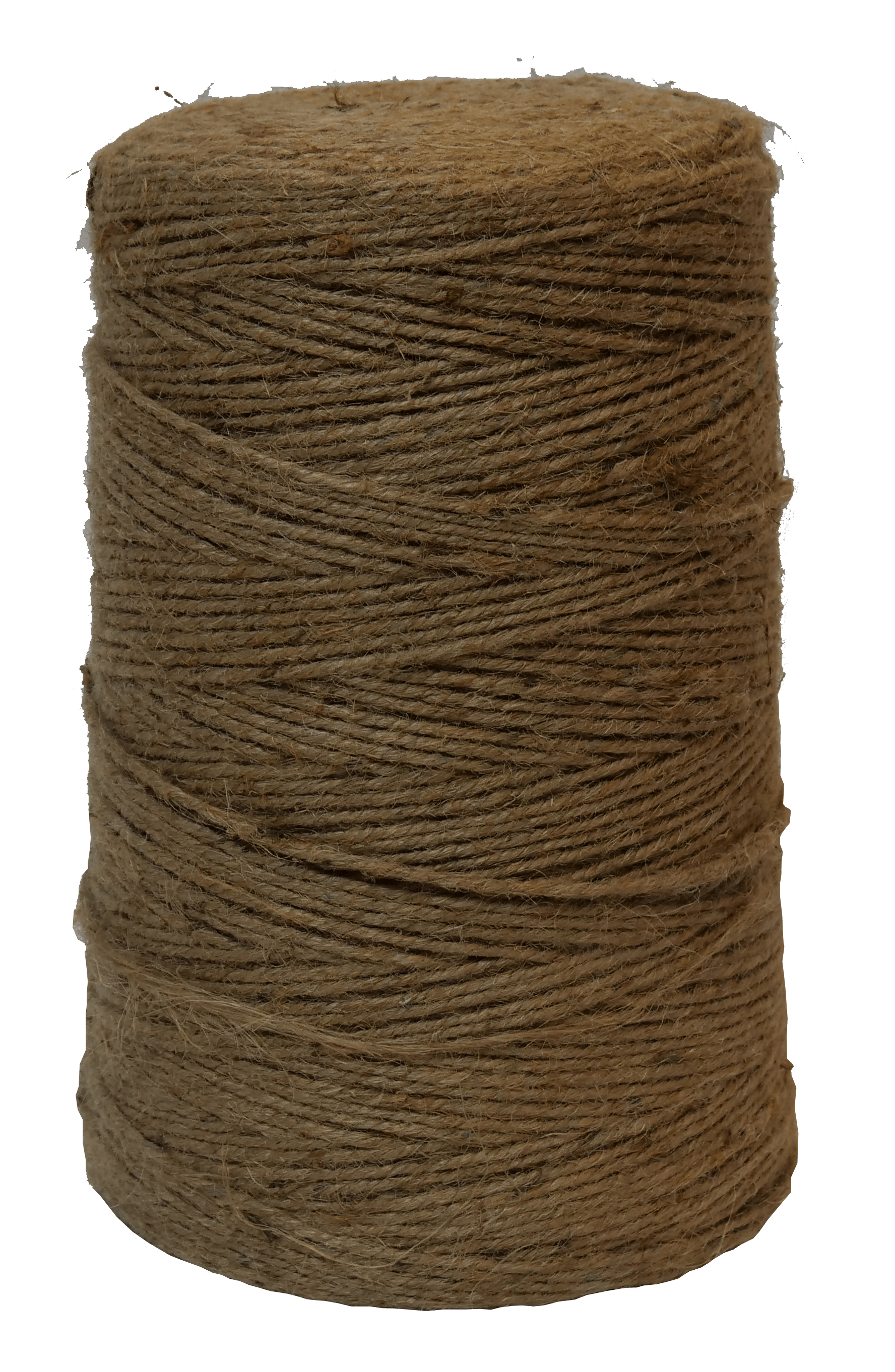Twine--Synthetic or Natural?

There are several ways to bind hay bales. These include twine, net wrap, and wire. Wire is rarely applicable to small farm hay production since it is used mainly for large, high compression bales typically found on large farm and hay marketing operations. Net wrap was addressed in a previous blog. Therefore, let’s delve into the different types of twine and their advantages/disadvantages.
 There are two basic types of twine--synthetic and natural. Polypropylene is the most common type of synthetic twine. Made from plastic polymers, this type of twine is extremely durable and rot resistant. For these reasons it is a good choice for bales being left out in the field or for hay operations where bales will be handled often. However, its non-biodegradability is also seen as a disadvantage. Refuse poly twine can litter feedlots and barns for years since it does not degrade. Furthermore, a study conducted by North Dakota State University found that accidentally ingested plastic twine remained in a cow’s rumen for upwards of 14 days.The tensile strength of poly twine (its resistance to breaking under tension) does exceed that of natural twines. However, for the smaller bales produced on a smaller farm this should not be a problem. This is especially true if using the more compact hay equipment common on small operations. Another advantage of poly twine is its price. It is typically less expensive than its natural counterparts.
There are two basic types of twine--synthetic and natural. Polypropylene is the most common type of synthetic twine. Made from plastic polymers, this type of twine is extremely durable and rot resistant. For these reasons it is a good choice for bales being left out in the field or for hay operations where bales will be handled often. However, its non-biodegradability is also seen as a disadvantage. Refuse poly twine can litter feedlots and barns for years since it does not degrade. Furthermore, a study conducted by North Dakota State University found that accidentally ingested plastic twine remained in a cow’s rumen for upwards of 14 days.The tensile strength of poly twine (its resistance to breaking under tension) does exceed that of natural twines. However, for the smaller bales produced on a smaller farm this should not be a problem. This is especially true if using the more compact hay equipment common on small operations. Another advantage of poly twine is its price. It is typically less expensive than its natural counterparts.
Natural twines are made from materials such as sisal or hemp. These twines are made from plant fibers and are thus biodegradable and digestible. While poly twine can be stronger, natural twines are durable enough for small round and square bales. For larger bales they work well too. You just have to be sure that the product you are buying is of full weight and full length. A bargain price isn’t a good deal if the twine is weak.
Some hay producers are concerned that natural twines might rot too quickly. This should not be a problem for hay stored indoors or under cover. In this environment, if your twine is rotting, your hay is likely past its prime anyway. For bales left in the field as feed, biodegradability can be a perk. You won’t be finding refuse twine wrapped around animals’ necks or your wagon’s wheels for years to come.
 Some farmers use a clever feed management strategy with mini round bales bound by natural fiber twine. For the last baling of the year, bales are not collected, but instead left in the field, where livestock graze through the winter. Livestock quickly learn that as the twine rots off the bottom of the bale, the small round bales can be nudged over to expose fresh, nutritious hay. Since the bales are randomly scattered throughout the field, livestock don’t congregate in one area thus reducing wear and compaction on the field and improving spring regrowth. Farmers report that this management strategy results in better utilization of the late season hay crop versus leaving long growth through the winter.
Some farmers use a clever feed management strategy with mini round bales bound by natural fiber twine. For the last baling of the year, bales are not collected, but instead left in the field, where livestock graze through the winter. Livestock quickly learn that as the twine rots off the bottom of the bale, the small round bales can be nudged over to expose fresh, nutritious hay. Since the bales are randomly scattered throughout the field, livestock don’t congregate in one area thus reducing wear and compaction on the field and improving spring regrowth. Farmers report that this management strategy results in better utilization of the late season hay crop versus leaving long growth through the winter.
As you can see, there are many considerations when deciding upon which twine to use. Hopefully, this discussion will better enable you to make the right choice for your small-farm hay operation. To check out our twine offerings--in both synthetic and natural varieties--please visit our website here. Or, give us a call at 260-BALE-HAY today.
https://hayandforage.com/article-2500-finding-the-right-binding.html
https://www.agriculture.com/family/living-the-country-life/choosing-baling-twine
https://www.sciencedirect.com/topics/engineering/sisal
Recent Posts
-
Tedding? Raking? What's the Difference?
Small-farm operators who are new to hay production are often unsure of the differences between teddi …Jul 1st 2024 -
Introducing the Ai2 Original 3-Pin Quick Attach For Kubota BX Tractors
Are you a Kubota BX owner who's looking to expand the capabilities of your front loader! Then look n …Jun 1st 2024 -
Springtime Hay Preparations
Through the winter months, it seems like spring will never get here. However, it is now upon us and …May 1st 2024




